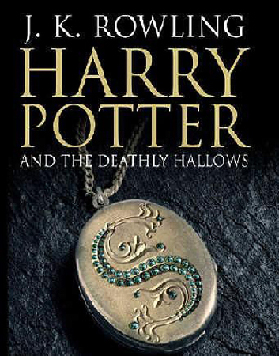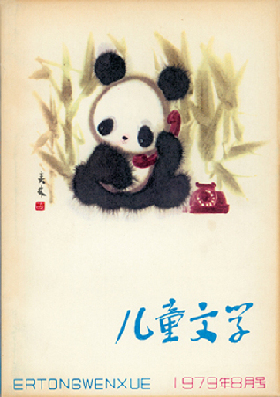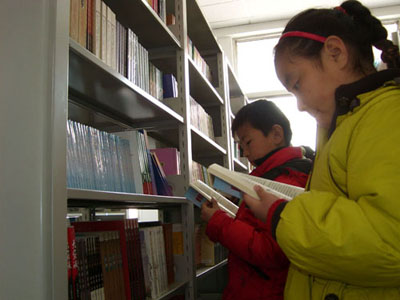Is literature for little children or for profits?
Children’s literature is for readers and listeners up to about the age of twelve and is colorfully illustrated. With children shouldering more burdens and cares in this modern age, parents are beginning to consider buying their children books, a main carrier of culture, as a special food for thought for their kids. In bookshops, parents are always amazed by the astounding number of books available for children. Tasked with enlightening the children, a major part of the community, children’s literature has gained in respectability. But a closer examination of it in China tells that beneath a prosperous market and growing sales, this particular area of literature is littered with many problems.
 |
Several years ago, when Harry Potter hit Chinese bookshelves, it brought another wave of marketing boom;but at the same time sadness to the local authors of children’s literature. Harry Potter sold around 6 million copies in China, a feat hard for its Chinese counterparts to follow. Despite efforts put in by the local author by composing a good story, marketing teams racking their brains for promotion and bookshops attracting readers with generous discounts, they were still not able to entice the children into reading books by local authors. Why? This is because some of the books are disconnected with reality and they are pandering to the public tastes. The writer takes social trends as a guide for their production, adding too many adult contents in the books and children find it boring. The abandonment of the basics is widely acknowledged as one of the great strategies of books for children. A back-to-basics movement is what is needed as the first step towards improvement.
It is also noticeable that the whole society has been caught up with the boom of different economic sectors and people tend to believe commercialization is the shortcut to a healthy profit. Children’s literature, unfortunately, has become one of the victims of commercialization. The commercial interests have been the first priority for booksellers, even before the writer starts writing. The books are not written for little children; they are written for big money. To strike a balance between business and literature is of great importance if we want to see our children relish in reading books.
 |
In addition, with the advent of the information age, Internet is ubiquitous and children are easily addicted to this new toy. Children are curious about the world and are keen to learn more about their people and the world around them. Children’s literature is supposed to lead them to the knowledge about the world, but it has somehow failed. The themes in some books run opposite to children`s mentality and consequently, fails to capture their imaginations and becomes nonsense for the little readers. Furthermore, these books still are written in an old fashioned manner and are both stereotyped and meaningless. Because of this, these books take a back seat to the online games and cartoons.
Another development is the huge threat posed by foreign arrivals, illustrated by the cases of Harry Potter and Alice's Adventures in Wonderland, both of which have been successfully adapted to films. Some of the foreign books for children win the game because of their exotic flavors, while some take a total win because of its well-organized structure and breathtaking plots. In comparison, the majority of locally written books for children are a total mess. They are written with broken threads, misleading contents and the worst of all is plagiarism, a headache not only for the insiders. Follower books are rushing into the market once one book has become a best-seller and gained much in the profit.
 |
Also, the parents have to take their share of blame. Few parents have a clear sense of what book a child is to read; they buy books merely according to what they think their child should be reading. The decision is made based on their perception of the books and past experience. The children are forced to read books that are not suitable for his or her age group, and the interest just fades away. Children are regarded as an especially treasured stratum of society in almost every community. They are our hope. To create a better environment for their growth, we have to examine ourselves and look inside their minds. We have to bridge the gap between a child’s fantasy world and the adult’s world of reality. This is the way it has to be.
















